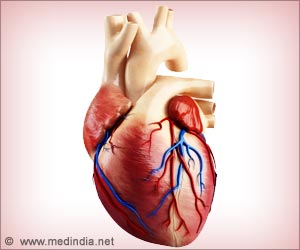
‘A minimally-invasive procedure to fix aortic aneurysm may be associated with an increase in long-term complications, compared to an alternative procedure.’
Tweet it Now
They also tracked patients with an aneurysm who underwent 'open surgery', which involves a large incision in the belly.The patients who underwent the EVAR procedure had a lower mortality risk in the first six months following the operation, and were shown to have a similar mortality risk up to eight years following the operation.
However, the researchers wanted to then track what happened after this eight-year period.
In the latest study, published in The Lancet, the researchers found that after eight years the EVAR patients had a higher mortality rate than patients who underwent the open procedure.
The authors stress that, overall, the EVAR procedure has benefits for patients, such as less pain and a shorter hospital stay. However they urge doctors to assess patients annually following the operation, to prevent complications.
Advertisement
The technique involves inserting a tiny flexible plastic tube, called an EVAR device, inside the bulge to strengthen the vessel walls. The tube is inserted into the body through a small incision in the groin, and fed up to the aorta with a guide wire.
Advertisement
In the longest running study of its kind, the research assessed whether one operation had advantages over the other, and randomly assigned 626 patients to have the EVAR procedure, while 626 were assigned to the open procedure. All patients were aged 60 or over (the average age was 74), and had the procedure between 1999 and 2004.
The initial results of the study suggested that in the six months immediately following the operation, patients who underwent the EVAR procedure had a 42% reduction in mortality risk compared to patients who underwent the open procedure.
This was thought to be due to the complications from the open operation such as bleeding and chest problems.
The team then assessed the patients again from this six-month period to eight years after the procedure. They found no difference in mortality risk between the two patient groups.
In the latest study, the team assessed longer-term mortality risk, between eight and 15 years after the procedure.
The patients who received the EVAR procedure were found to have a 14 per cent increased risk of mortality during this period.
They also had a greater risk of the initial aneurysm expanding again and rupturing, which in the majority of cases was fatal.
There had been 13 deaths among the EVAR patients between eight to 15 years due to an aneurysm bursting. Two deaths were due to this complication in the open surgery group.
The EVAR patients were found to have a four-fold increased risk of aneurysm-related death compared to patients who received open surgery.
Professor Roger Greenhalgh, lead author from the Department of Surgery and Cancer at Imperial said these deadly aneurysms could be prevented if the patients' aortas were scanned regularly.
He explained: "These findings need to be a wake-up call to doctors across the world. Many of these aneurysms could have been caught with regularly scanning, such as ultrasound scanning. Therefore we should be scanning patients who undergo the EVAR procedure at least once a year, rather than the current situation where patients receive scans far less often."
He added: "The vast majority of aneurysm repairs performed in the world are EVAR procedures, and we are certainly not recommending switching back to the open operation. This involves a large incision in the body and carries serious risks."
Professor Greenhalgh explained that the aneurysms in EVAR patients seem to be re-filling when the tube inserted into the artery slips out of place. This may be because a patient's artery continues to widen following the operation, causing the tube to eventually come loose.
"What appears to be happening is that the device inserted into the aorta can move slightly over time. This allows tiny leaks to occur. Over time, these leaks cause a pressure build-up in the original aneurysm, which is then at risk of bursting. However, if patients were regularly scanned, these aneurysms could be caught in time."
He added that the devices used in modern procedures have improved over the last 15 years, when this study first started. Furthermore, 3D dimensional imaging has emerged to enable surgeons to fit the device more accurately, which reduces the risk of leaking.
"However, even taking these improvements into account, regular, life-long, scanning is still essential," he said.
The team also found patients who had the EVAR procedure appeared to have a higher rate of cancer deaths in the latest follow-up period.
"We don't know what could be responsible for this. One possibility is the higher number of CT scans these patients received, as well as the additional corrective procedures which involved radiation imaging, which is why ultrasound scans are now used. These additional cancer deaths warrant further investigation," said Professor Greenhalgh.
He also added scientists need to investigate why some people's artery walls seem to be more prone to widening, and developing aneurysms. Research suggests genetics may play a role, while lifestyle factors such as smoking and high blood pressure also increase risk.
Professor Greenhalgh added: "Aneurysm repair - of either type - is an essential, life-saving operation. However, any patients concerned about the operation should talk to their healthcare team, and discuss which type would be best for them, and how often they will be monitored."
Source-Eurekalert









